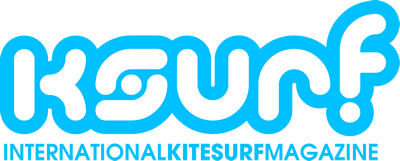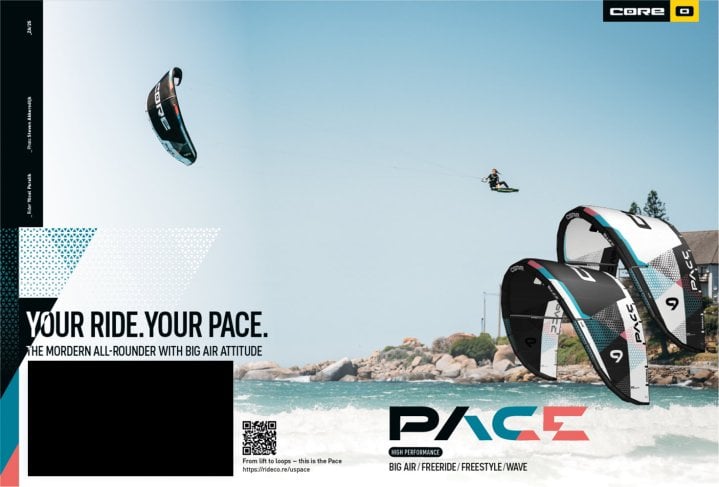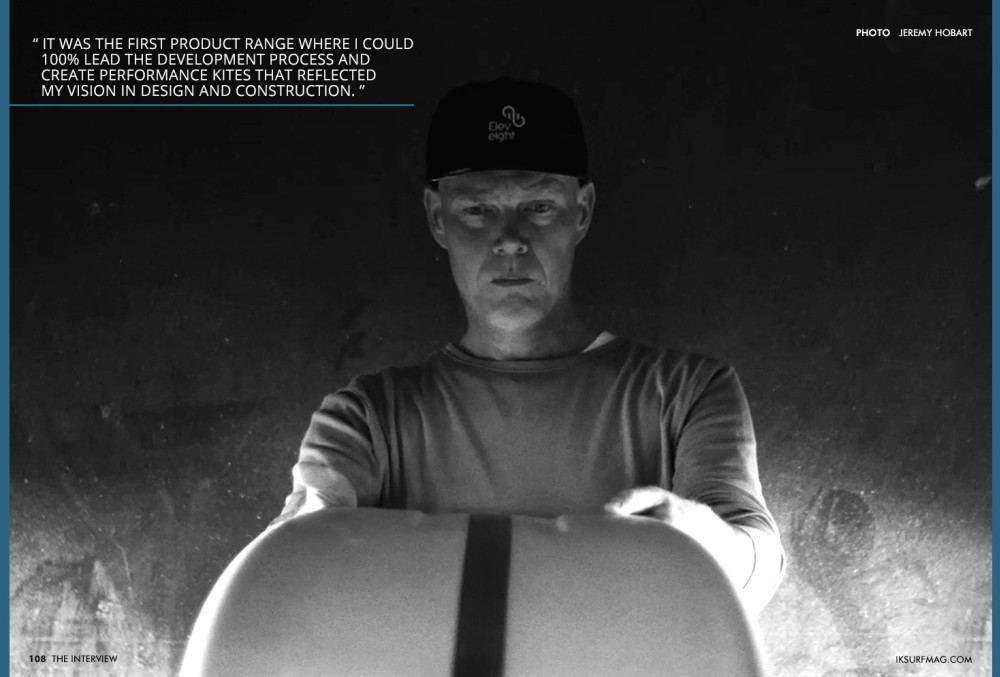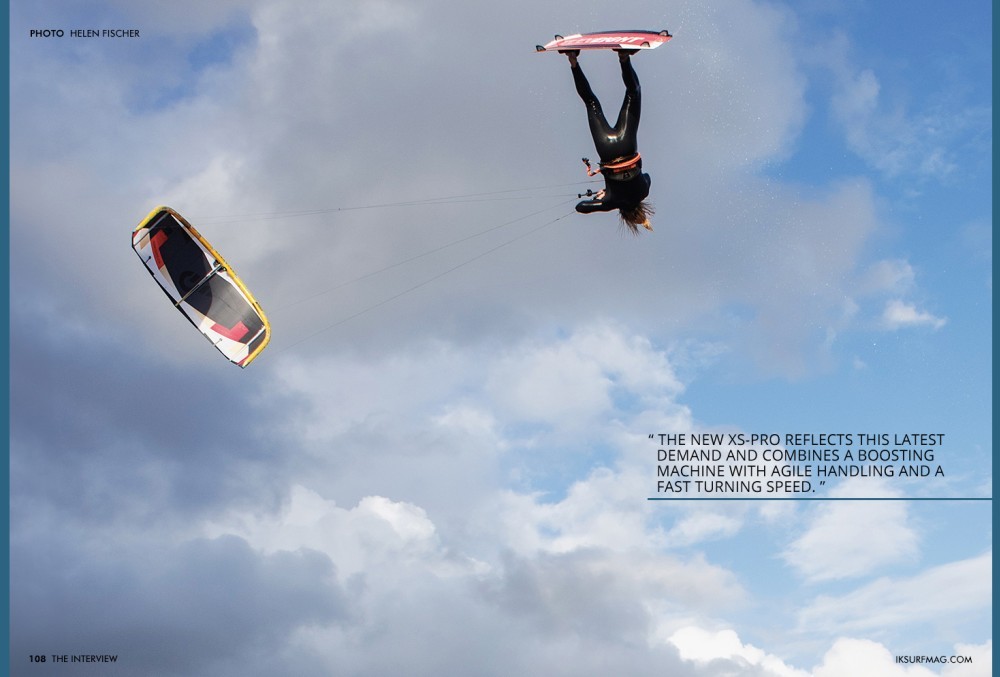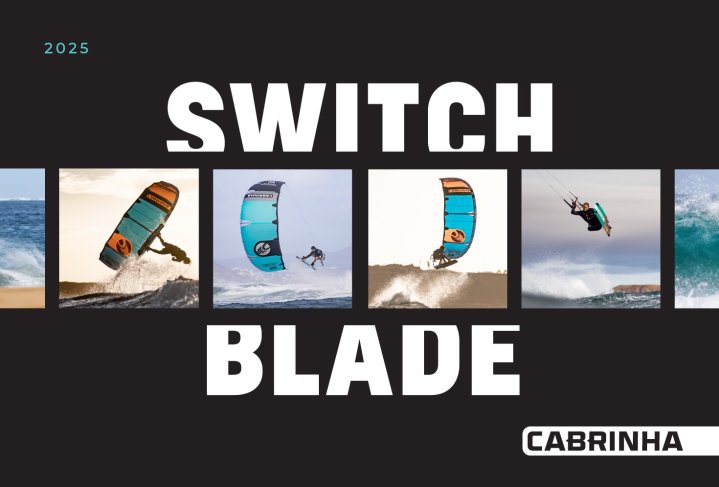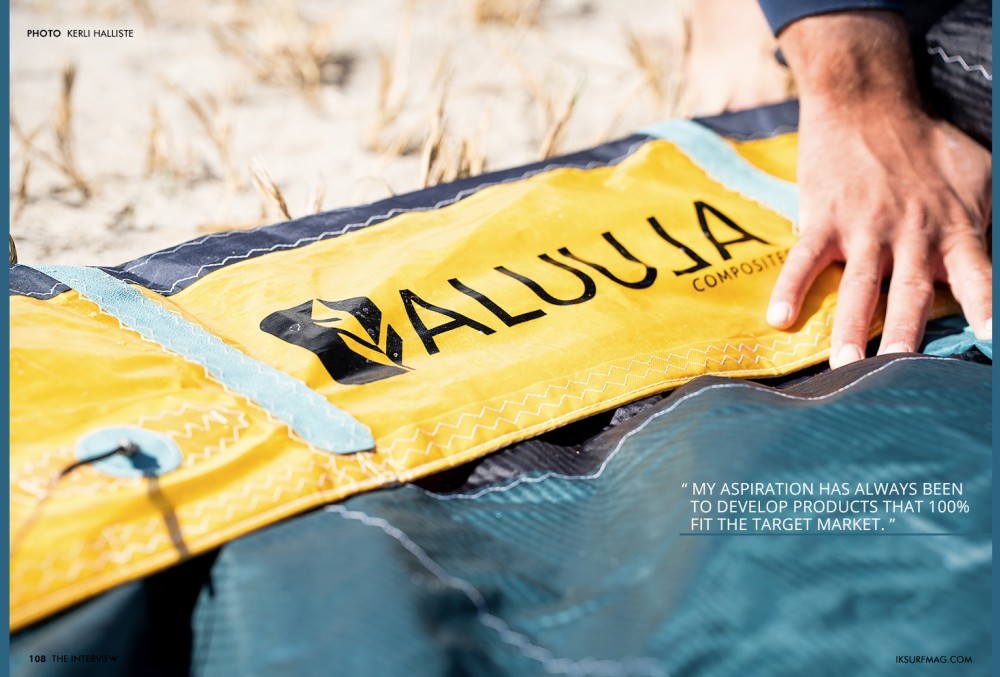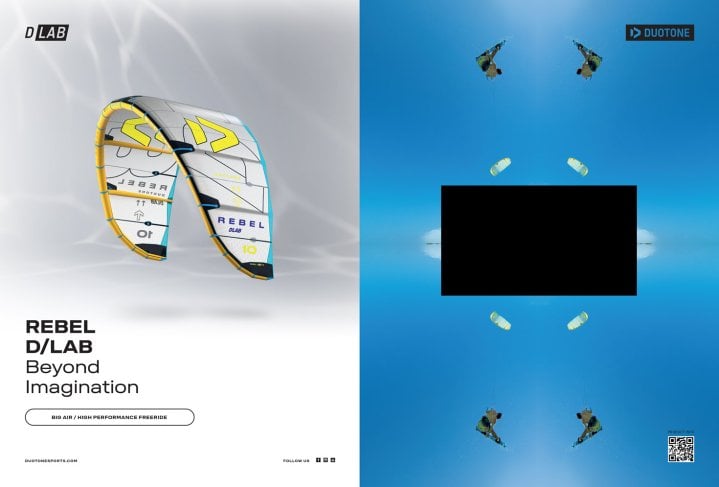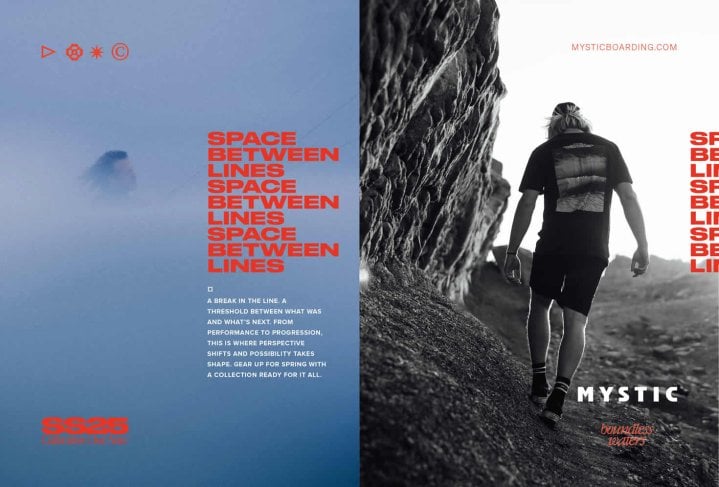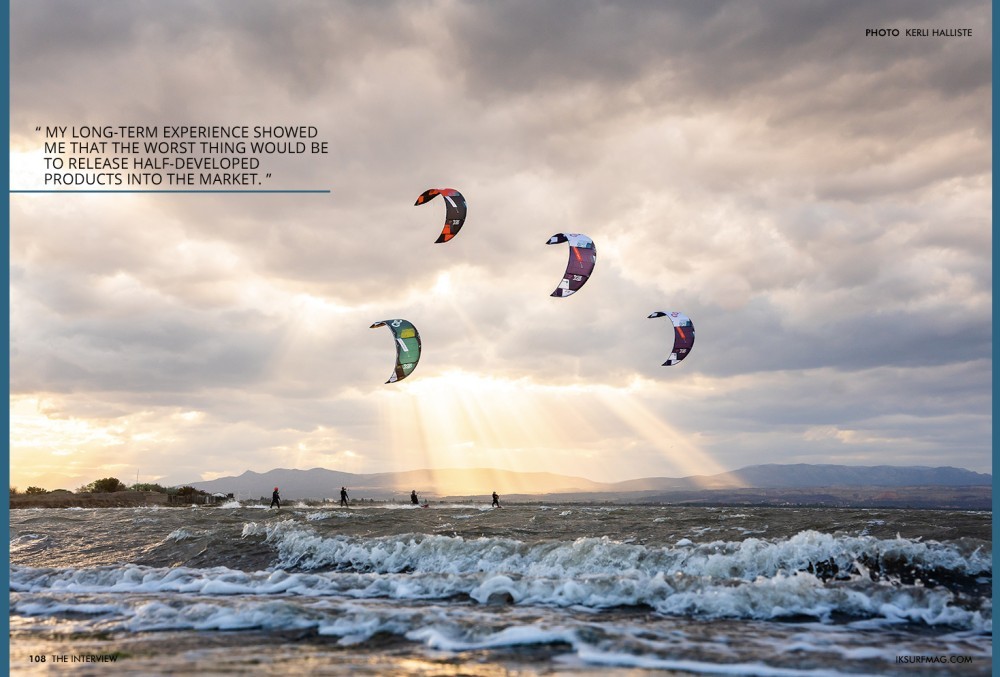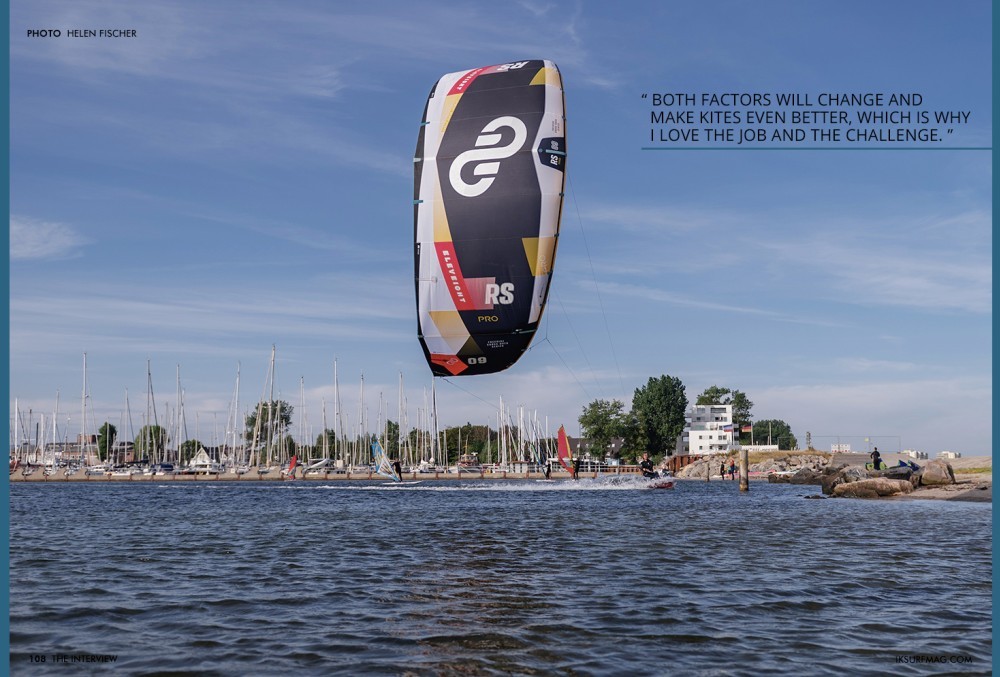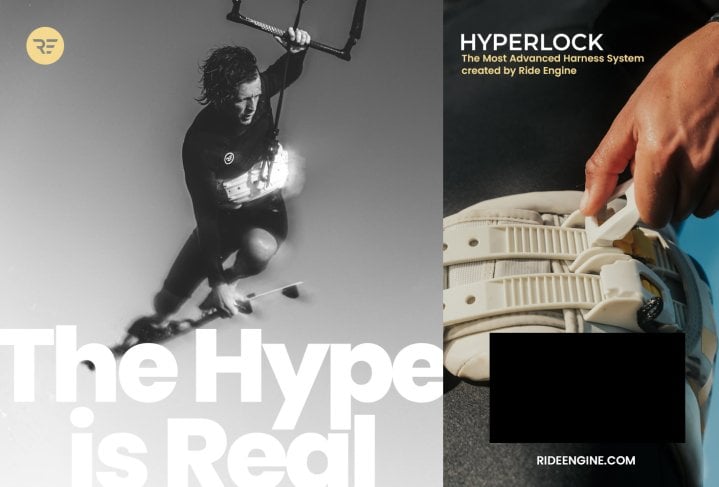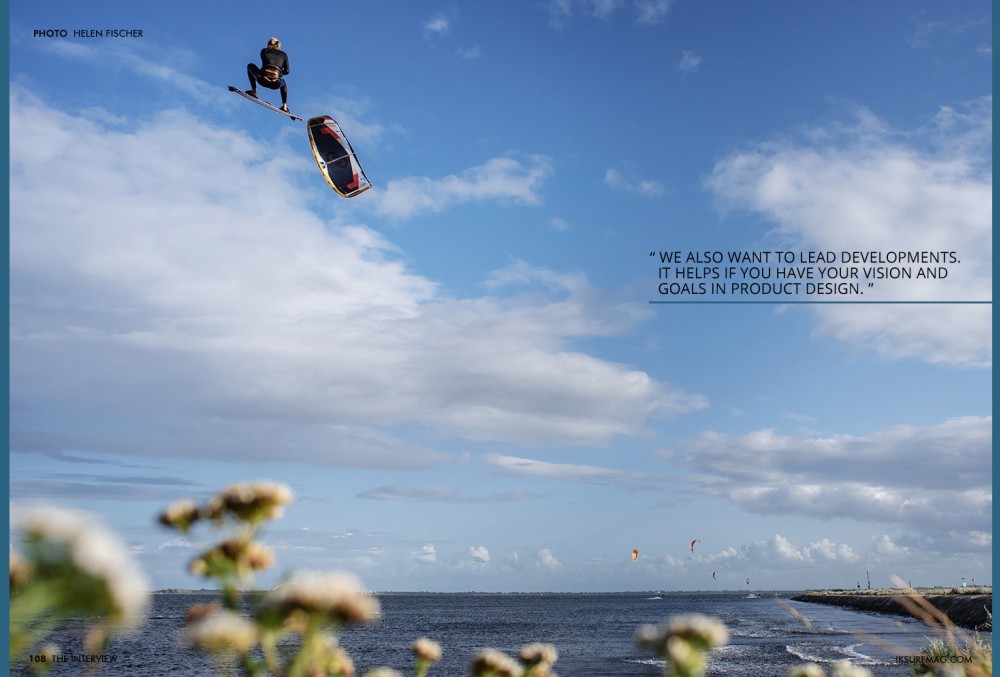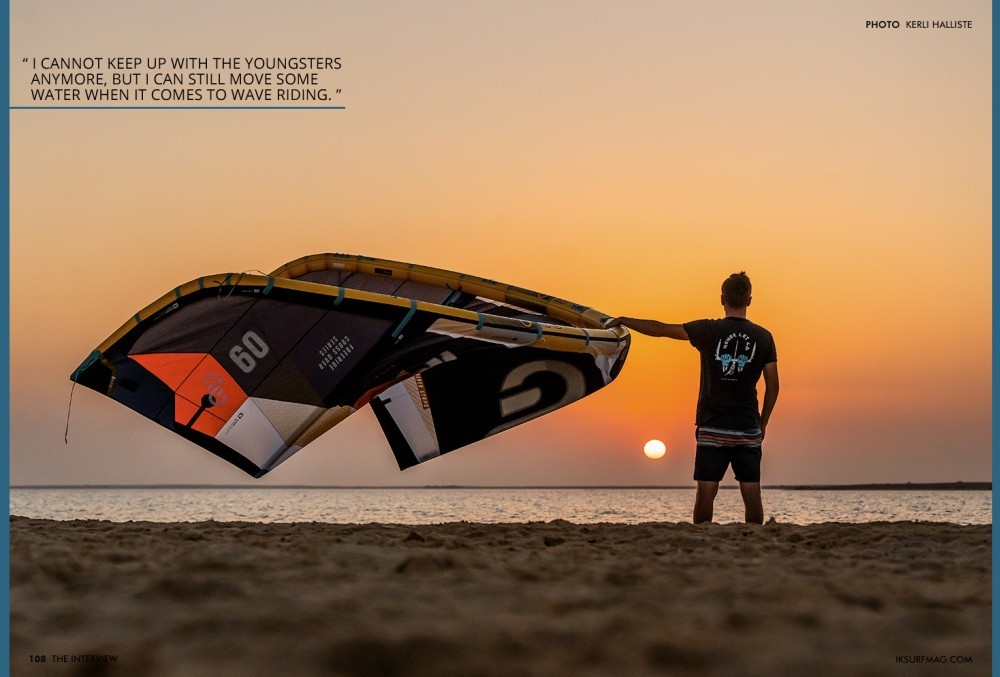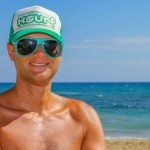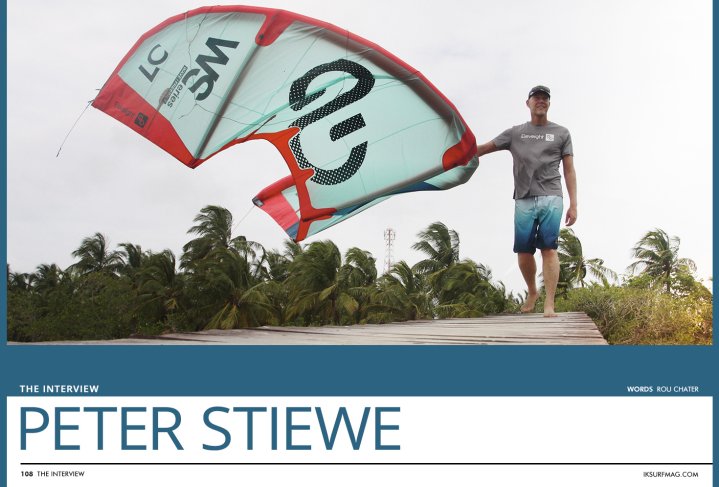
The Interview: Peter Stiewe
Issue 108 / Tue 17th Dec, 2024
Peter Stiewe is a true pioneer in kite design, with a career spanning decades. In this exclusive interview with Rou Chater, we dive into his journey, the evolution of kite technology, and what it takes to stay ahead in a constantly progressing industry. We’ve got it all right here.
Hi Peter, it’s great to have you here! You’ve been designing kites for quite a while and across various brands before co-founding Eleveight. What have been some of the biggest developments and breakthroughs over the years?
Thanks for having me too! I’ve had the luxury of seeing our sport grow from the beginning with all the different shapes, materials, and construction developments. I have had the opportunity to be part of many product innovations. The early days, in particular, saw almost every design as a breakthrough based on how fast the sport progressed. More specifically, I think developing Cuben fibre leading edges in 2010 was a very exciting project.
Like the developments with Aluula today, I had the same vision: I wanted a lighter, more reactive kite with an amazing hang time. The cuben fibre kites had a much smaller leading edge diameter and got amazing feedback. Until now, some people still hang on to these kites as their weapon of choice.
On a more personal level, developing our first Eleveight lineup in 2017 was a real breakthrough. It was the first product range where I could 100% lead the development process and create performance kites that reflected my vision in design and construction. A lot of experience went into that product lineup, and the whole team worked together in a way that reflected our passion for the sport and the community.
Today, I am also very proud of our first Aluula kites and wings, which evolved from my experience with stiffer materials. Finding a suitable material mix took some time for me to work with Aluula. But after all the updated versions of the material, I’m pretty happy with Aluula and the outcome of our PRO range.
Recently, there’s been a huge push toward big air. How does a kite like the XS-Pro differ from something like the RS, which is designed for multi-use freeride? What characteristics are you looking to enhance for Big Air?
The team at Eleveight saw the potential of big air quite early on, and we all found it very appealing to the sport, mainly due to its ‘wow effect,’ which we all loved so much from the start.
The first XS kite was released in 2020 with a clear design vision as a boosting machine with an explosive lift. The name XS stands for Extreme Series and delivered exactly what we wanted!
Since the beginning, we have used a delta hybrid design to stick to a 5-strut frame for the XS. The kite, therefore, has a higher aspect ratio than the RS and provides constant power in all conditions. The frame offers advantages in big air by being more explosive in lift performance and giving an extra long hang time. The XS frame also has a stiffer frame construction with less deformation and a faster recovery. That becomes essential when using the kite in high wind conditions and for radical loops.
Over time, we applied many changes to the XS. The sport progressed rapidly, and much more radical loops or double loops are the state of the art nowadays. The new XS-Pro reflects this latest demand and combines a boosting machine with agile handling and a fast turning speed. The new material mix between Aluula and XT Light struts helps us build a real racing car for big air.
The Eleveight range includes eight different kites, which is quite extensive! How challenging is that to manage, and do we need that many kites in a lineup?
Don’t get me started on this topic! You have hit the nail on the head with your question, which comes up in all our product meetings. We always face the same issue - do we need all these kites?
From the standpoint of a kite designer, I can clearly say that a kite that ‘does it all’ doesn’t exist. The different disciplines are particular, and they require unique products. From a commercial perspective, it could be better. Still, Eleveight is a company that stands for high-performance designs, and my aspiration has always been to develop products that 100% fit the target market.
If you look closely at our eight kite models, they are very well segmented into different disciplines. The PS, for example, is made for schools and beginners, and we aim for a very durable and learning-specific kite. Our RS range comprises three models: the RS, RS+, and RS PRO. This freeride range is very versatile. We developed the RS’s three-strut design with different materials to give our customers different performance options in freeride. The Prime RS has a balanced flight characteristic with a classic plug-and-play feel. The opposite is the RS PRO with Aluula, our high-performance racing car version. The kite DNA is the same, but the kite is more dynamic and aimed at the advanced and ambitious rider. Similarly, we wanted to offer the customer a choice between the prime XS or the Pro version for Big Air.
One of my main passions in the water is wave riding, and to maximise our surf sessions, we developed the WS. This kite is made for stability, drift and fast turning. If you ride strapless, you need a kite that you can control 100% in any situation and has power, but only when needed.
We also have a group of freestylers in the family, namely Arthur Guillebert and our Young Guns team. Freestyle has become less popular lately, but for us, it is still one of the most complicated disciplines in our sport, and hence, it requires special performance products. We have a steady and loyal customer base, and they deserve a product made for their passion!!!
Last but not least is the OS. The foil kite segment was somewhat compromised by the wing foil market. But the OS is such a light freeride kite with so many advantages that we keep it in the lineup for the remaining followers.
I might have drifted away from your question, but I believe in specialised products. Our sport has been growing over the last 2 decades, as have the different disciplines. And yes, developing so many kite models requires an immense workload from all departments. For the R+D side, my work nearly doubled over the years, but development and testing are pure joy for me. That is why I love my job, and through Eleveight, we created a company where passion for sports and performance products comes first.
What’s the design cycle like at Eleveight? How long do you typically spend working on a new model?
I work with two cycles, both of which have different time frames. The evolutionary product development part takes one product version to the next, and the cycle is around 12-14 months. In other words, we will start developing the next version once we approve a product. Some of our team riders get the new products quite early, which helps me communicate and share some ideas for changes in the upcoming version. The second stage is the market feedback, which involves working closely with our distributors and area managers to gather valid feedback for next year’s product.
The second cycle is for new product developments, which take 24 - 30 months. Here, we take testing and development quite seriously, and any introduction of new material, for example, needs time. Also, the testing is much more complex, and the prototypes rarely match my vision of the product. We aim to release products only when we are 100% confident about the performance outcome. If we need more time, we will take it. My long-term experience showed me that the worst thing would be to release half-developed products into the market.
We’ve been taking big steps forward with materials lately. This is where the development has been strongest, while kite shapes have been tweaked and perhaps reached a peak. What’s the biggest challenge with these new materials?
Our industry has become much better at developing raw materials in the last five years. We have yet to have a breakthrough like the bow kite’s development, but we refined kites and bars. Aluula may be a bigger stepping stone, but the real improvement is that different material specifications equal different performance outcomes.
The challenge with these materials is the testing and the supply chain. Testing is essential because the mix of materials makes the difference. Nowadays, the talk regarding new materials is too much about weight reduction. And yes, a lighter product is better, but stiffness, recovery, and related twists are more important.
Nowadays, I can develop kites using shape parameters and different materials to fit the target market. For a good freeride kite, I do not need to use high-performance materials like Aluula. I need a material mix that balances performance and intuitive handling well.
Aluula has been the big buzz lately, but will new materials in the future offer an even better flying experience?
As we say, ‘development never stops’, which will hold regarding the designs and materials. Both factors will change and make kites even better, which is why I love the job and the challenge. I would no longer be a kite designer if I could not improve designs and make better kites!
The learning from developing super high-performance products like kites with Aluula should benefit other kite models with a lower price point. Not everybody needs an Aluula kite, but some parameters are very helpful for general performance. In recent years, we have also experimented with different materials, and we can use specs from the high-performance segment in the normal product categories. It will benefit the flying experience and offer reasonably priced products.
How does the arrival of new materials affect the development cycle? It must be tricky when you’re in the middle of a design and a new material emerges. How do you deal with that?
We take our time for new products and start with our vision first. At Eleveight, we don’t just want to be followers; we also want to lead developments. It helps if you have your vision and goals in product design. We also test new materials for an extended period. Aluula was the best example: I had the first samples of Aluula at the end of 2019, but I needed more convincing at that stage. The quality could have been there, and we would have had more issues in the production process. Over time, Aluula changed, and with the updated version of the material and related reinforcements, the test results became better. I was sure to build kites with excellent performance and solid quality.
In terms of design processes and technology, how has kite design evolved over the years?
We had a lot of incremental changes over the last few years. A big design change, like the bow kite invention, hasn’t happened, but we improved the materials, the related material mix, and the construction. Kites nowadays have much better quality. They have much more longevity based on the better raw materials, but also in relation to the production process. I can only talk about Eleveight products, but using high-quality ripstop with a special coating has resulted in more shape stability over a longer period. Also, our supplier did a great job improving the cutting, glueing and sewing techniques, which decrease the deformation under load and offer better recovery.
The panel cuts have changed over the years. Each of my kites has a different panel cut to ensure the load is distributed most efficiently. The related double ripstop layers (aka 2-step transition) and the reinforcement help with a clean form and stable canopy. I could go on and on, but the point is that we had a lot of incremental changes. People sometimes say that kites are fairly similar from year to year, but they should fly a kite from 5 years ago compared with a new model, and they will instantly feel all the big and little improvements.
Do you still rely on testers to provide prototype feedback, and do you foresee a future where technology like fluid dynamics takes over this role?
Maybe my age plays a specific role here, as I’m old school and like to hear feedback from our team. To see them riding, communicating with them, and getting their feedback is a part of the development process, which I really enjoy. The future may differ, but the human component and passion play a big role in my life, and I will keep it this way. I like to spend time in the water; that is where development and testing belong!
What’s the hardest kite in the design range, and which is the easiest?
It’s like asking which of your kids you favour the most! I like them all equally, as well as the development time for each product. For each product, our Eleveight Pro range was more of a challenge and a bit harder at the beginning. I could rely on my experience but not so much on previous models and feedback. The development time frame is longer, and I need many more prototypes over a more extended period. The road to the final product is a bit bumpier, but when the team comes back, and you get the right feedback and see their smiles, all the effort pays off, and it is a gratifying feeling.
Finally, what do you ride, and which design has been your favourite to date?
I ride all of our kites for testing with all different kinds of crafts. In the freestyle and big air segment, I cannot keep up with the youngsters anymore, but I can still move some water when it comes to wave riding.
Wave riding has always been my passion, and the Eleveight WS and our Surfboard Pro range are the gear I ride the most. I live on the west coast of Portugal, and we have fantastic wave spots, so I can also practise quite a bit!
However, my favourite design is our freeride kite, the RS. At this stage, I have finalised the development of the 9th version, and over the years, so much experience and improvement went into the kite’s DNA. The RS is the best freeride kite I’ve developed so far, and I’m very proud of the feedback and popularity of this model.
Cheers, Peter; thanks for taking the time!
Videos
By Rou Chater
Rou has been kiting since the sports inception and has been working as an editor and tester for magazines since 2004. He started IKSURFMAG with his brother in 2006 and has tested hundreds of different kites and travelled all over the world to kitesurf. He's a walking encyclopedia of all things kite and is just as passionate about the sport today as he was when he first started!
